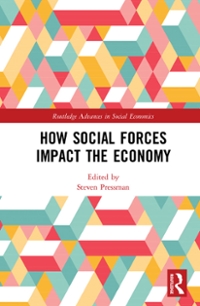Question
TheIndian rupeedepreciated by 2.6% in 2020 despite record dollar inflows coming into the country, thanks to the Reserve Bank of India's (RBI) relentless absorption of
TheIndian rupeedepreciated by 2.6% in 2020 despite record dollar inflows coming into the country, thanks to the Reserve Bank of India's (RBI) relentless absorption of the inflows. The upside of this intervention has been a record pile of forex reserves that has served as a confidence booster for the markets. Indeed, RBI's interventions have been looked upon as prudent given that the economy was in no shape to absorb inflows during a recession. While there were many reasons for RBI's intervention, the main one was to filter out inflows during a recession.
Amid the pandemic, the collapse of domestic demand for imports led to a record current account surplus. The surge of dollar inflows only inflated the overall balance of payments surplus. A current account surplus driven by contraction in domestic demand for imports is not a good thing and when a surge in inflows coincides with this, it leads to distortions in asset prices. The central bank's interventions have gained strength in tandem with the growing surplus in the balance of payments. It is logical that RBI may end up easing back its intervention when this surplus too begins to wind down.
Economists at Barclays Securities (India) Pvt. Ltd believe that the odds for RBI to ease off on its interventions are increasing in the medium term. "In the absence of a persistent current account deficit, the RBI will have to continue to absorb excess foreign currency through intervention. However, as the current account surplus reduces from 2020 levels, the marginal reserve accretion will likely slow as well, and will mostly come via capital inflows," they wrote in a note.
A recovery in the domestic economy has led to imports bouncing back. Of course, imports are still lower than what they were before the pandemic and exports have recovered more sharply. Given the recovery, the current account surplus narrowed to $15.53 billion in the September quarter from $19.23 billion in the June quarter of FY21. Economists expect this surplus to narrow further and fall into a deficit. However, a full-year deficit is unlikely until FY23, according to Barclays. Ergo, the RBI may not let go of the rupee but the exchange rate's first steps towards greater freedom of movement has begun.
Elucidate the relationship between Current account surplus and exchange rate. Substantiate your answer with clues from the above excerpt.
Step by Step Solution
There are 3 Steps involved in it
Step: 1

Get Instant Access to Expert-Tailored Solutions
See step-by-step solutions with expert insights and AI powered tools for academic success
Step: 2

Step: 3

Ace Your Homework with AI
Get the answers you need in no time with our AI-driven, step-by-step assistance
Get Started


